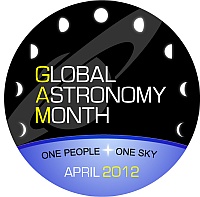

Endlich wieder Star Party!Ich kann mich nicht wirklich daran erinnern, wann wir die letzte gute Beobachtungsnacht in einem regulär geplanten Teleskoptreffen hatten. Jedenfalls waren 2011 alle unsere derartigen Treffen ausgefallen, genau so wie der Winter Workshop in diesem Jahr. Am Freitag sah es ganz so aus, als würde sich diese traurige Serie fortsetzen. Doch man soll nie aufgeben, bevor das Wochenende vorbei ist. |
Star Party at lastI cannot remeber when we had the last really good observing night at a regularily scheduled star party weekend. All I know is that during 2011, all our star parties suffered from bad weather as did the Winter Workshop in January 2012. On Friday evening, everything looked like a continuation of that pityful series. But, one should never give up before the weekend is over ... |
MeteorologieAndreas Pfoser hat uns dankenswerter Weise auch dieses Mal mit Wetterprognosen versorgt. Diese waren für Freitag denkbar schlecht: Eine Okklusion mit Kaltfrontcharakter würde am Abend des Osten Österreichs erreichen und am Abend für Niederschläge und Gewitter sorgen. Doch am Samstag könnte sich, vor der Herannahen eines weiteren Frontensystems, eine Chance ergeben. So war es dann auch. Keine Beobachtung am Freitag. Doch am Samstag machen sich doch einige auf den Weg auf die Hohe Wand. |
MeteorologyAndreas Pfoser did a good job in predicting the weather for this weekend in a professional way. The weather model for friday was really bad: An occluded front was expected for Friday evening and should bring precipitation and even thunderstorms with it. And so it happend. But for Saturday evening, the weather model left space for some optimism. There should be an opportunity for at least a few windows of clear sky before another cold front was approaching. So, a few of us made their way to Hohe Wand. |

Blick von der Hohen Wand nach Osten am Samstagnachmittag
Panoramic view from Hohe Wand, looking east at Saturday afternoon
SamstagnachmittagWie vorhergesagt beherrschen dichte, tiefe Quellwolken zunächst den Himmel. Doch je später der Nachmittag, desto mehr klare Fenster tauchen auf und lassen die Sonne durchscheinen. Ich baue ein Teleskop auf und eröffne die Easter Star Party mit einem Blick zur Venus. |
Saturday afternoonAs predicted, heavy clouds cover the sky, but the later the afternoon, the more clear windows appear in the sky and let the Sun shine through them. I set up a telescope in front of Gasthof Postl and manage to find Venus. So, the star party begins in the afternoon with a view at our sister planet. |
|
|
|
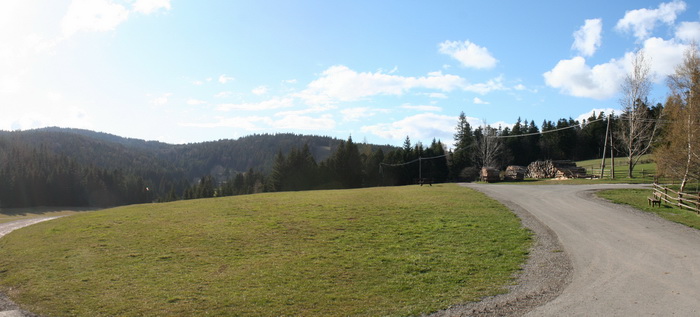
Schon viel weniger Wolken über unserem Beobachtungsplatz
The clouds begin to disappear at our observing site

Party Time!Die Frage ist jetzt einmal, wie viele Begeisterte teilen Andreas und meinen Optimismus, was das Wetter anbelangt? Am Nachmittag sind wir eine überschaubare Gruppe von vier. Doch am Abend kommen dann doch weit mehr Mitglieder als erwartet hier her und machen den Abend wirklich zur Easter Star Party 2012. |
Party Time!As for now, the question is: How many enthusiasts will share Andreas' and my optimism about tonight's weather conditions? In the afternoon, we are a very small group of four. But in the evening, more members than expected arrive at our observing site and make Easter Star Party 2012 happen. |
|
|
|
|
|
|
Noch einmal: MeteorologieDie Quellwolken haben sich komplett aufgelöst am späten Nachmittag und für kurze Zeigt zeigt sich der Himmel tiefblau und wolkenlos. Aber am späteren Abend ziehen von Südwesten Cirren auf. Sollte die Nacht enden, bevor sie überhaupt begonnen hat? |
Once again: MeteorologyThe heavy clouds completely disappeared in the late afternoon and for a short period the sky appears in deep blue and without any cloud. However, later in the evening, a layer of higher cirrus clouds approaches from a southwestern direction. Should the obsering night end before it started? |
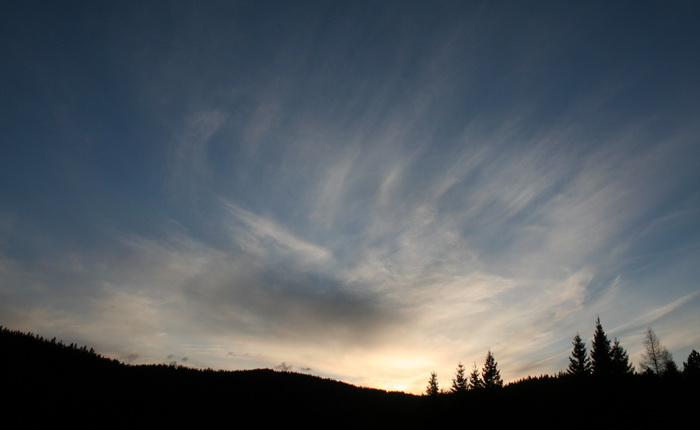
Cirren von Südwesten. Das Ende?
Cirrus clouds approaching. Will this end our observing night?
|
Nein, das ist nicht das Ende unserer Beobachtungsnacht. Die Cirren sind Gewitterreste aus der Gebirgsregion Schneeberg / Wechsel. Sie ziehen rasch ab und wir setzen den Aufbau unserer Instrumente fort. |
No, this is not the end of our observing nights. The clouds are remnants of thunderstorms far away in the mountains. They disappear as it ist getting darker. So we continue to set up our instruments. |
|
|
|
|
|
|
|
|
|
|
Wir sind eine kleine Gruppe von 20 Personen an 7 Teleskopen. Wenig vielleicht, aber ein Neubeginn nach mehr als einem Jahr ohne Teleskoptreffen. Die Wolken ziehen sich mehr und mehr zurück und es gibt so viel zu beobachten: Die Planeten Jupiter, Venus, Mars und Saturn; unzählige Deep Sky Objekte; Satelliten wie Iridium oder ISS; und den Meteorschauer der Lyriden. |
We are a relatively small group of 20 people sharing 7 telescopes. But, it is a new beginning after more than one year without star party. The clouds disappear and there is so much to observe: The planets Jupiter, Venus, Mars, and Saturn. Countless deep sky objects. Artificial satellites like Iridium flares and the ISS. And the Lyrid meteor shower. |
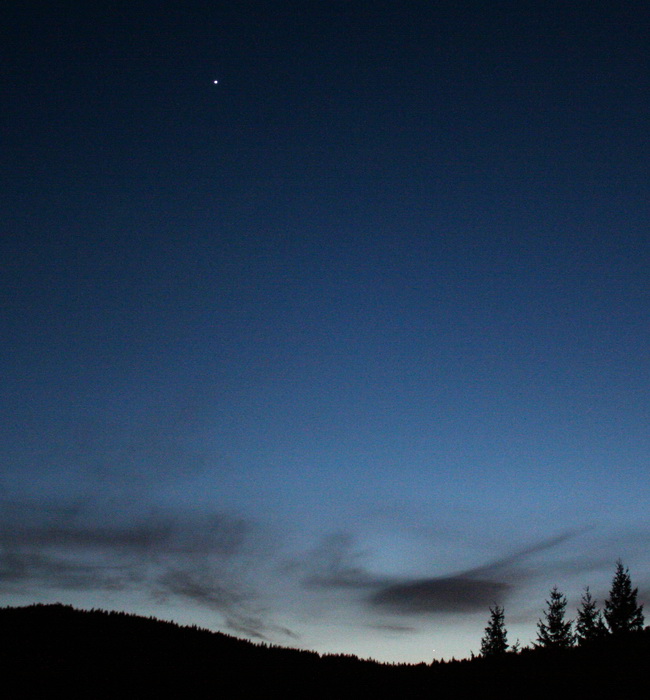
Venus und - wer findet ihn? - Jupiter
Venus and Jupiter. Can you find Jupiter?
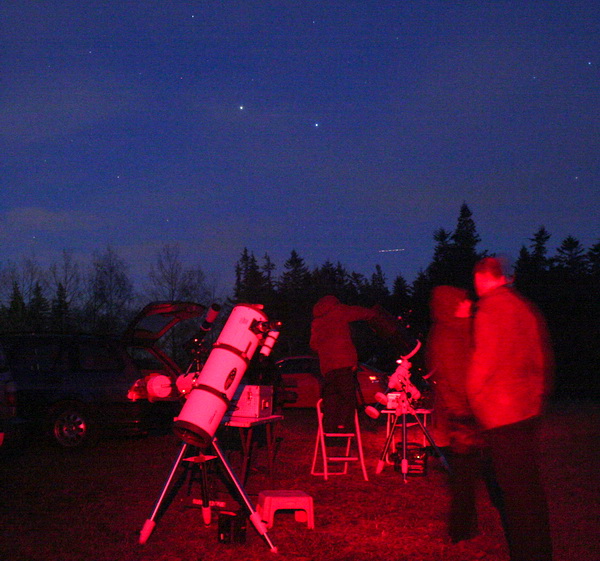
Beobachter unter Saturn und Spica
Saturn and Spica shine above Easter Star Party 2012
|
|
|
PlanetenDie Planeten sind schon in der Dämmerung unsere ersten Ziele. Venus, heller als alle anderen Gestirne, im größten Glanz. Der kleine Mars zeigt doch noch Details im Fernrohr. Und natürlich noch Saturn, der schönste von allen ... |
The PlanetsAt dusk, the planets are our first targets. Bright Venus, outshining all other objects in the sky, being at maximum brightness now. Tiny Mars, nevertheless showing some detail in the telescope. And of course Saturn, the most beautiful of them ... |
|
|
Venus. Bresser Messier N203, F=3000mm, IR blocking filter, DBK 21 webcam. |
|
|
Mars. Bresser Messier N203, F=3000mm, IR blocking filter, DBK 21 webcam. |
|
|
Mars. Bresser Messier N203, F=7500mm, IR blocking filter, DBK 21 webcam. |
|
|
Saturn. Bresser Messier N203, F=3000mm, IR blocking filter, DBK 21 webcam. |
In die TiefeJe dunkler der Himmel wird, desto mehr ziehen die Wolken ab. Die Nacht ist anfänglich kühl und sehr freucht. Doch nach und nach wird es wärmer und trocknet auf. Zwischen 22.30 und 2.30 Uhr MESZ haben wir exzellente Bedingungen mit einer freisichtigen Grenzgröße um die 6 mag. |
Into deep skyThe darker it gets, the more the clouds disappear. Initially, it is quite chilly and humid. But later that night, it gets a little bit warmer and the air dries up. From 10.30 p.m. until 2.30 a.m. we have excellent observing conditions with a limiting magnitude of around 6 mag. |
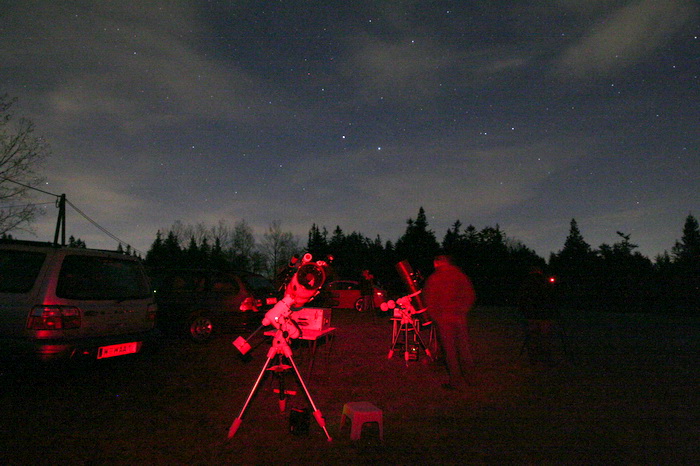
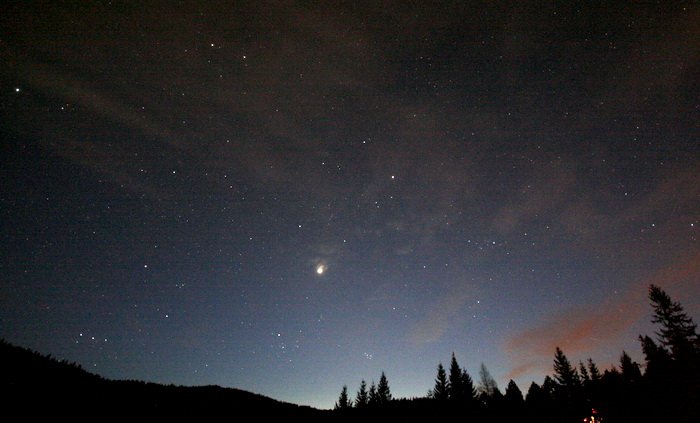
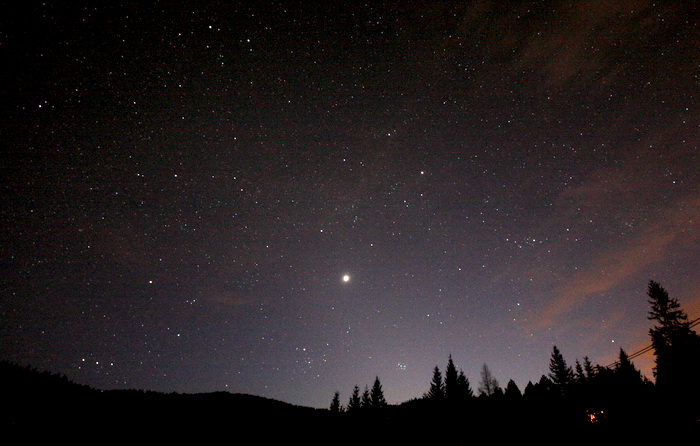
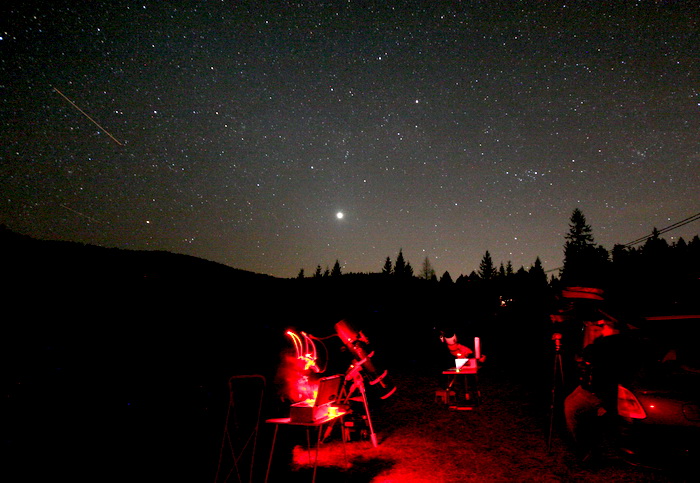
Künstliche SatellitenSie können das eine oder andere Astrofoto (zer)stören, doch bei einer öffentlichen Beobachtung sind künstliche Satelliten immer eine Attraktion. |
Artificial SatellitesWell, they can disturb a photo, but for public viewing, artificial satellites always are an eye catcher. |
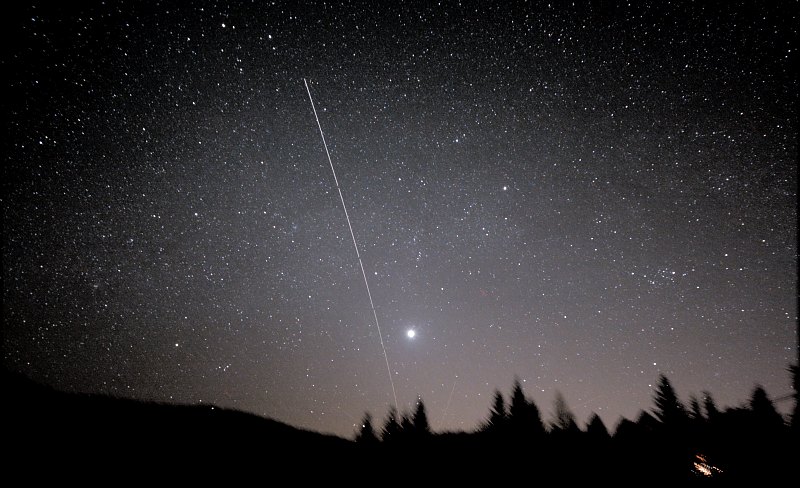
ISS zieht ihre Bahn an der Venus vorbei / ISS wandering near Venus
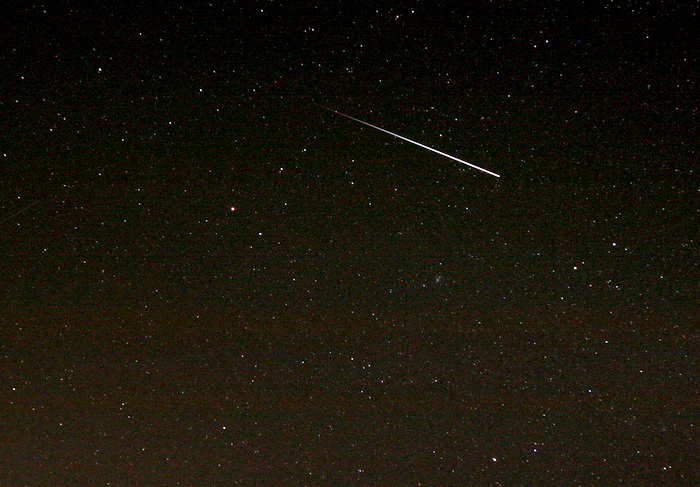
ISS taucht in den Erdschatten ein, oberhalb des Löwen
ISS is entering Earth's shadow near the constellation of the Lion
Galaxien und mehrIn der Leere der Frühlingssternbilder sind Galaxien die dominanten Objekte. Unter den guten Bedingungen heute Nacht sind sie tolle Ziele, sowohl für visuelle als auch für fotografische Beobachtung. Da die Sommersternbilder im Osten schon hoch stehen, sind auch Kugelsternhaufen besondere Sehenswürdigkeiten. |
Galaxies and moreIn the vastness of the spring constellations, galaxies are the dominant deep sky objects. Under very good conditions, they are very nice targets both for visual and photographic observation. As the summer constellations climb the sky in the east, globular clusters are splendors in the night sky. |
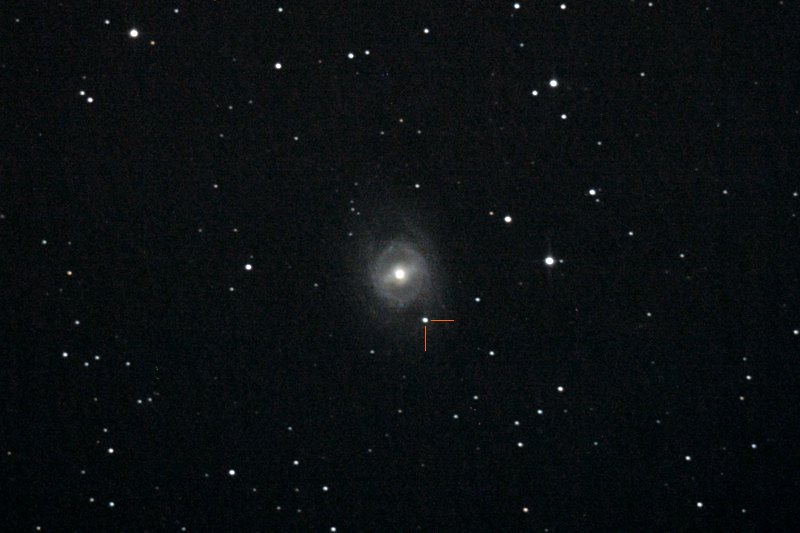
M95 + SN 2012aw. Canon EOS 350D, F=1000mm f/5, 17 x 60s, 1600 ISO. Deep Sky Stacker.
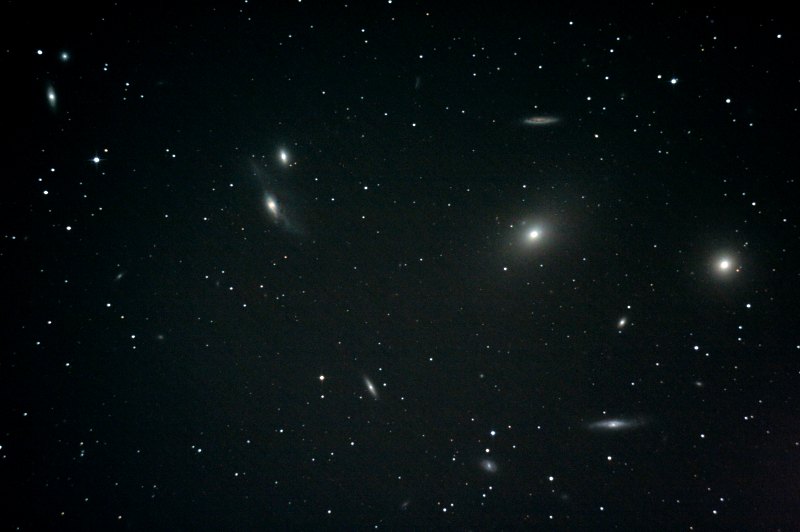
"The Nonet" - M84/M86 group. Canon EOS 350D, F=1000mm f/5, 30 x 60s, 1600 ISO. Deep Sky Stacker.
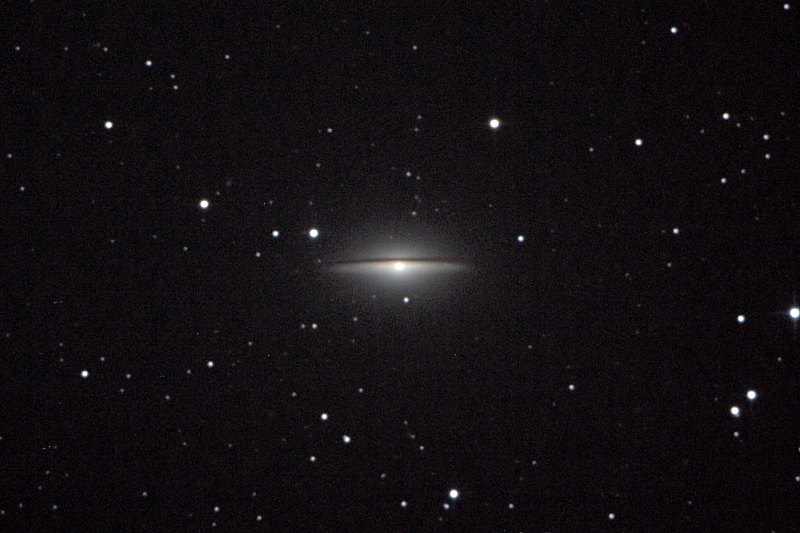
M104. Canon EOS 350D, F=1000mm f/5, 15 x 60s, 1600 ISO. Deep Sky Stacker.
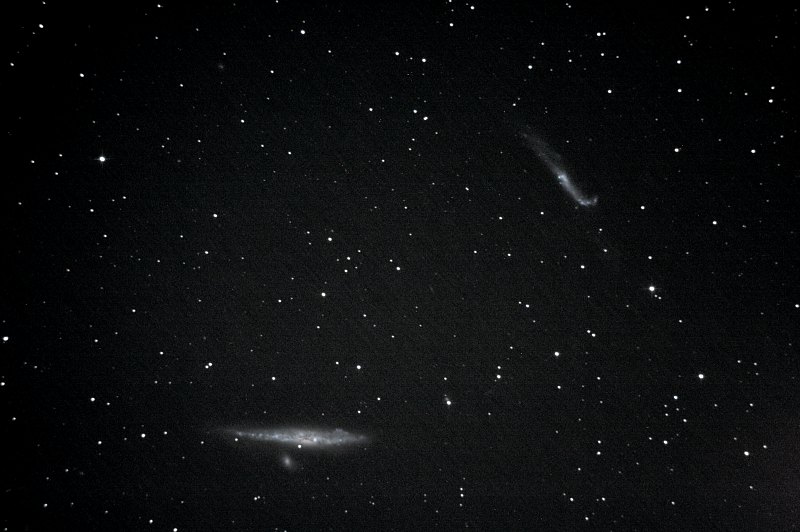
NGC 4631 "Whale Galaxy" and NGC 4656 "Hockey Stick". Canon EOS 350D, F=1000mm f/5, 27 x 60s, 1600 ISO. Deep Sky Stacker.
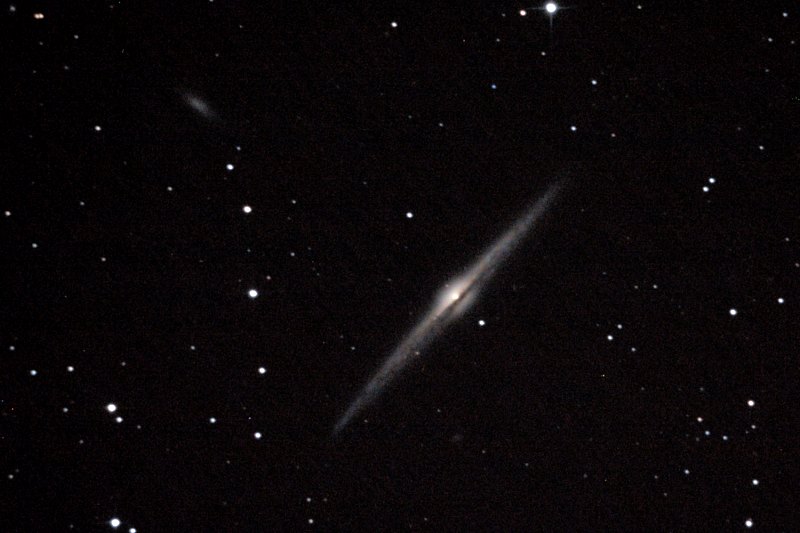
NGC 4565. Canon EOS 350D, F=1000mm f/5, 15 x 60s, 1600 ISO. Deep Sky Stacker.
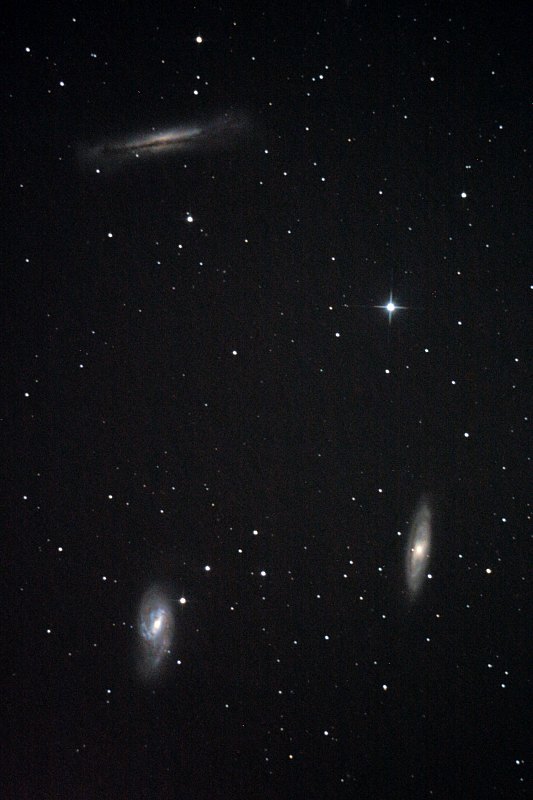
Leo Triplet. Canon EOS 350D, F=1000mm f/5, 15 x 60s, 1600 ISO. Deep Sky Stacker.
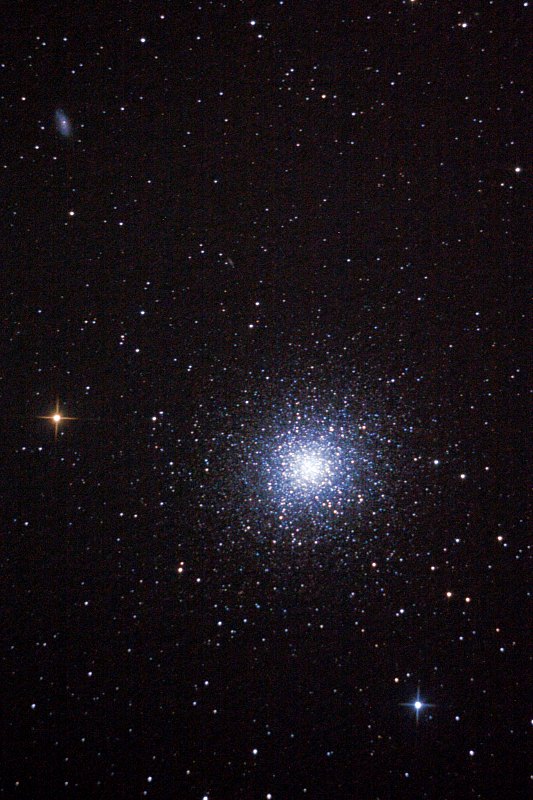
M13 + NGC 6207 (upper left corner). Canon EOS 350D, F=1000mm f/5, 7 x 60s, 1600 ISO. Deep Sky Stacker.
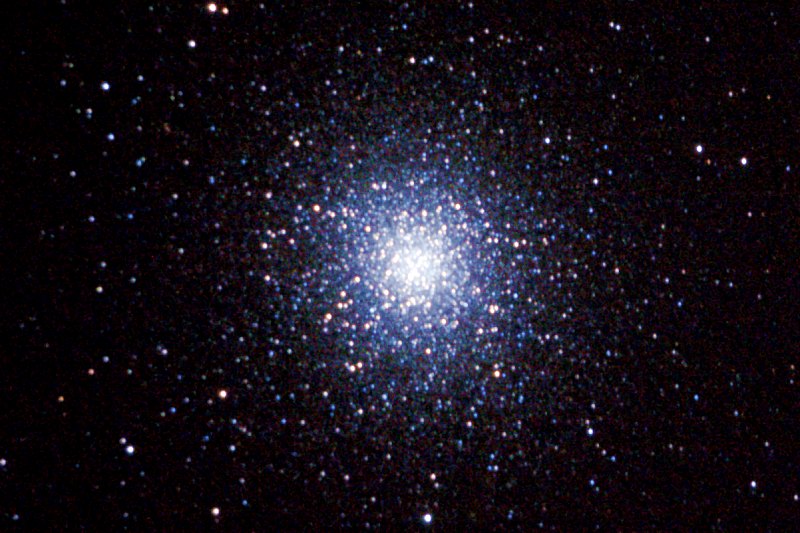
M13. Canon EOS 350D, F=1000mm f/5, 7 x 60s, 1600 ISO. Deep Sky Stacker.
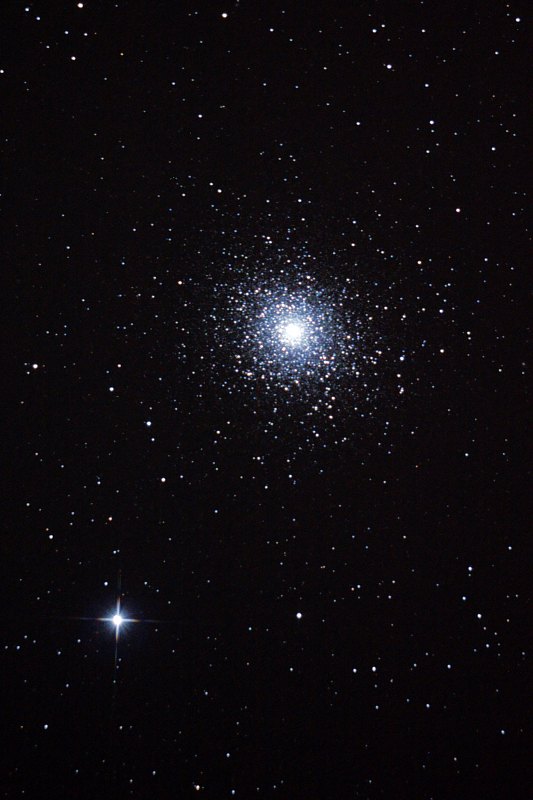
M5. Canon EOS 350D, F=1000mm f/5, 8 x 60s, 1600 ISO. Deep Sky Stacker.
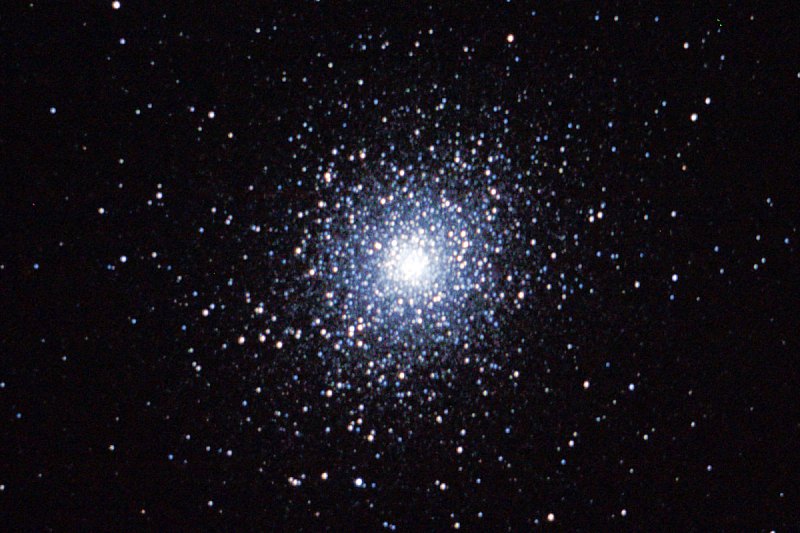
M5. Canon EOS 350D, F=1000mm f/5, 15 x 60s, 1600 ISO. Deep Sky Stacker.
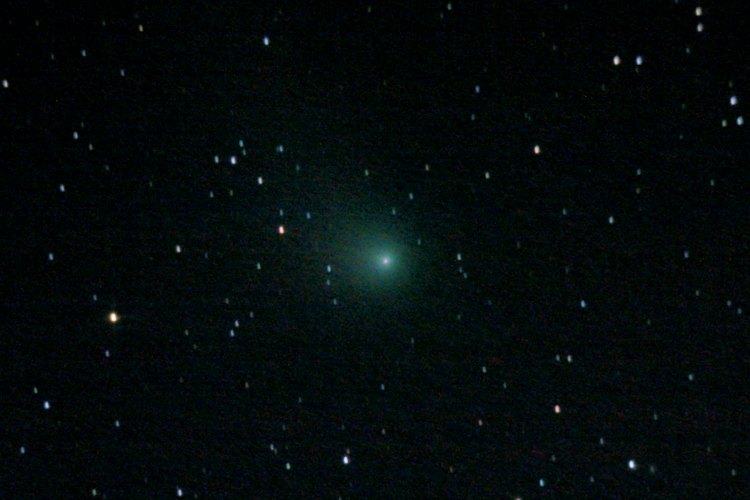
Comet C/2009 P1 (Garradd). Canon EOS 350D, F=1000mm f/5, 12 x 30s, 1600 ISO. Deep Sky Stacker.
|
Hinweis: Die hier gezeigten Bilder sind nicht alle im gleichen Maßstab. |
Note: All images shown here are not to scale. |
Was für eine Nacht!Diese Nacht übertraf unsere Erwartungen. Selbst jetzt, um 2.30 Uhr MEZ am Samstag, ist der Himmel wolkenlos. Es gibt nur einen Grund, abzubauen: Müdigkeit. Keinen technischen Grund, kein Grund in den Bedingungen. Wir konnten auch den Meteorschauer der Lyriden beobachten. Die hellsten Objekte erreichten ca. -1 mag und zeigten für einige Sekunden eine Leuchtspur. Wir zählten 3 bis 5 Erscheinungen pro Stunde. |
What a night!This observing night was beyond our expectations. Even now, at 2.30 a.m. on Saturday, not a single cloud can be seen in the sky. To be honest, the only reason to stop now is that I am really tired. No technical reason, no environmental reason. We also observed several meteors of the Lyrid meteor shower. The brightest of them reached approx. -1 mag and showed a luminiscend tail for a few seconds. During our observation period, we counted 3 to 5 occurences per hour. |
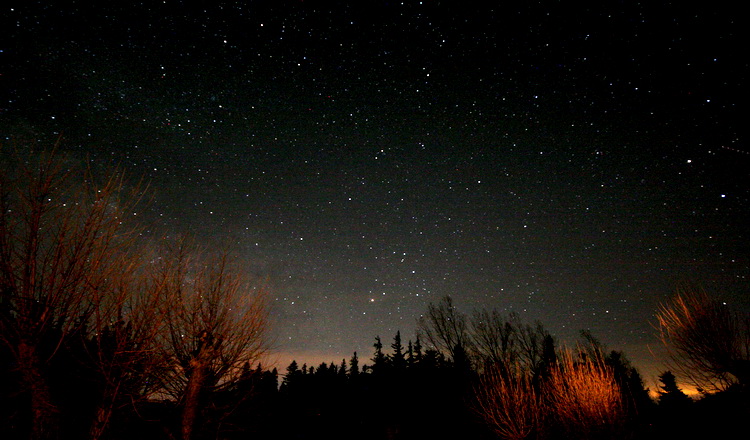
Skorpion im Süden / Scorpius in the south
SonntagUnglaublich, aber wahr, am Sonntagmorgen ist der Himmel bedeckt und gegen 10 Uhr beginnt es zu regnen. |
SundayBelieve it or not, on Sunday morning the sky is overcast and around 10 a.m. it starts raining. |
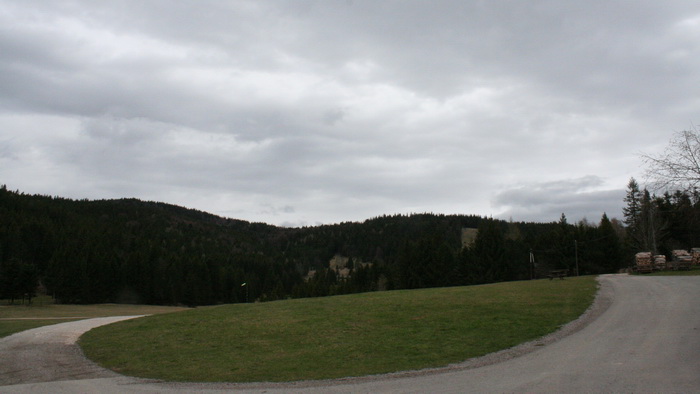
Unser Beobachtungsplatz am Sonntagmorgen / Our observing location on Sunday morning

Panoramablick am Sonntagmorgen / Panoramic view on Sunday morning
Was lernen wir daraus?Astronomie, zumindest Amateurastronomie, ist eine Freiluftbeschäftigung. Unter den mitteleuropäischen Wetterbedingungen sind Langzeitprognosen unmöglich. Wenn es eine Chance auf einen guten Abend oder eine gute Nacht gibt, müssen wir sie ergreifen! So möge dieser Artikel ein Ansporn für alle sein, die diesmal ein wenig zu pessimistisch waren :-) Und ja, es ist globaler Astronomiemonat 2012; unter dem strahlenden Himmel von heute Nacht sind wir Menschen alle gleich. |
Lessons learnedAstronomy, at least amateur astronomy, is an open air profession. Under central European weather conditions, long term predictions are impossible. If there is a chance for a good observing evening or night, we have to take it. So, let's be a little bit more optimistic the next time! And, yes, it is Global Astronomy Month 2012; don't forget: Under that brilliant sky we have seen tonight, we all are one people. |
Alexander Pikhard

|
Wiener Arbeitsgemeinschaft für Astronomie. www.waa.at |